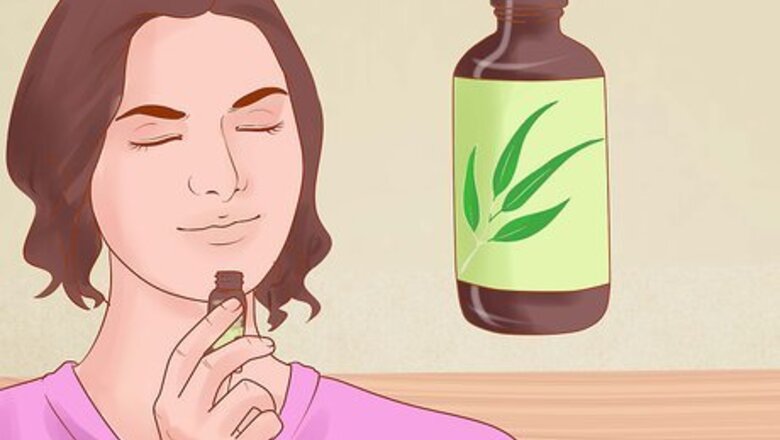
views
Using the Right Herbs to Help Congestion
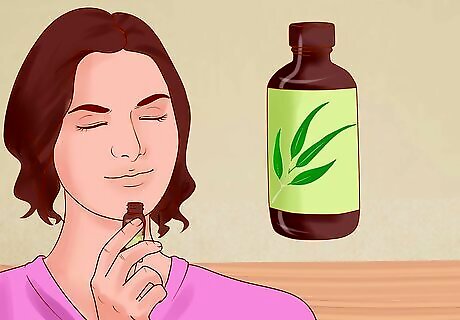
Use eucalyptus. Eucalyptus is typically available as an oil instead of an herb. However, it is also available in lozenges, cough medicines, rubs, and bath salves. It has a strong scent and decongestant properties that can help with mucus build up. Eucalyptus has been proven safe for pregnant and nursing women as well as children and it has the GRAS status in the US.. However, never use the oil on children under two years old and always follow dosage instructions. Use a small amount, as the oil is very strong. Try putting a few drops into a bowl of hot water for a steam treatment. Never ingest eucalyptus oil unless specifically told to by your doctor. There are cold and cough medicines that have eucalyptus oil in them, but they have been formulated for ingestion. The oil is very concentrated and can be very dangerous if too much is ingested. Always ask your doctor before taking any dosage of eucalyptus oil orally.

Try anise, thyme, and oregano. There are many different herbs that are helpful for congestion. Anise, thyme, and oregano are herbs that are safe for pregnant and nursing women as well as children in doses normally found in food and teas. They also have the Generally Recognized as Safe (GRAS) status in the US. Anise is available as a seed and essential oil. Use 0.5 to 3 grams of the seed or 0.1 to 0.3 mL of the oil. Use the seed in loose leaf tea or the oil in steam treatments. Thyme and oregano are available as a fresh or dried herbs and are safe at any dosage. They can be added to foods and sprinkled into loose leaf tea.
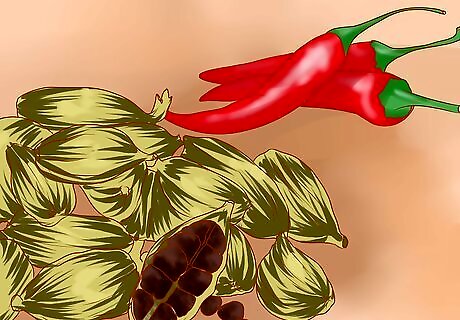
Use cardamom and cayenne pepper. There are other herbs that are decongestants and have additional qualities that can help with your congestion issues. Cardamom has antibacterial properties, which can help you fight bacteria or infection involved with your congestion. Cardamom has not been tested in pregnant and nursing women nor in children. Cayenne pepper works as a counterirritant, which means it irritates the mucous membranes with the result of increasing mucus production. Unlike with congestion, the mucus produced tends to be more liquid and easier to drain. Cardamom is available as a spice, as seeds, and as an oil. All can be used in cooking to help with congestion. The dosing depends on taste. Cayenne is available as a raw pepper, which can be eaten raw or cooked. You can also get it at powder, which can be used in recipes and mixed into beverages. There is no dosing information. The amount depends in taste.
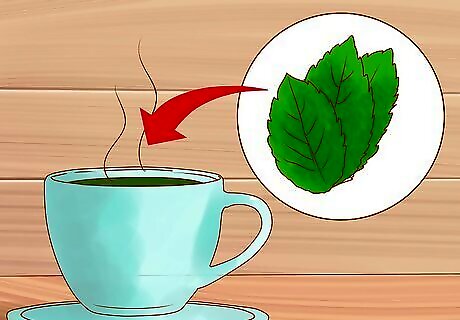
Try peppermint. Peppermint can be used as an herb or an essential oil. Its powerful smell help with decongestion. You can ingest peppermint oil, but only in small doses. It can cause heartburn. It is safe for pregnant and nursing women and children. It also has the GRAS status in the US. For tea, use 1 tsp of dried peppermint leaves in 1 cup of boiling water. Peppermint oil can be used in 1 to 2 mL doses on the skin. Ingest less than 1 mL at a time. Do not use peppermint or give peppermint products to small children and infants, as it can cause breathing problems in the young.
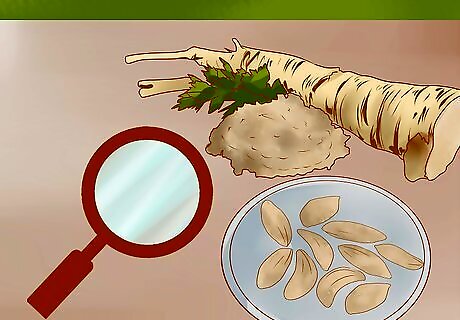
Contemplate fennel seed and horseradish root. There are some herbs that you should use with caution because they are not safe for all individuals. Fennel seed is safe for children, but has not been tested in pregnant and nursing women. Despite this, it has GRAS status in the US. Horseradish root has not been tested in pregnant and nursing women or children. Horseradish root may also be irritating for some people, so use it with caution. Despite the caution, horseradish root has been tested and found effective for sinusitis and bronchitis, which are conditions that cause congestion. The common dosage for horseradish is 20 g of fresh root per day while you are suffering from congestion or respiratory issues. This can be added to recipes or in sauces. It also comes in supplement form, with dosing between two and three capsules per day. Fennel seed can be taken as a seed or as an oil. The daily dosage of the seed is 5 to 7 g and of the oil is 0.1 to 0.6 mL.

Be cautious of pleurisy root. Pleurisy is an older term used to describe inflammatory conditions of the lung. Pleurisy root has been used since ancient times to treat this conditions, but little modern research is available of its effectiveness or side effects. Pleurisy root should not be used by pregnant or nursing women or by children. There are also some drug interactions with pleurisy root. Do not use pleurisy root with Digoxin (Lanoxin), any estrogens such as oral contraceptives, or diuretics (water pills) including chlorothiazide (Diuril), chlorthalidone (Thalitone), furosemide (Lasix), or hydrochlorothiazide (HCTZ, Hydrodiuril, Microzide).
Using Herbal Steam Treatments for Congestion

Understand how steam helps. Most decongestant herbs are best taken as steam treatments, breathing the herbs in, directly into the nose, the lungs, and the sinuses. Steam can help open up the nasal passages, help thin out the sometimes thick mucus, and allow the mucus to drain out of the sinuses. These treatments can be used along with pain relievers, antibiotics, and antifungal treatments as well as for viral infections of the sinuses. If you are already seeing a physician, continue with those treatments along with steam treatments. If you are not seeing a physician and these treatments don’t give you any relief within five to seven days, make an appointment to see a physician. You may be dealing with a more complicated situation.
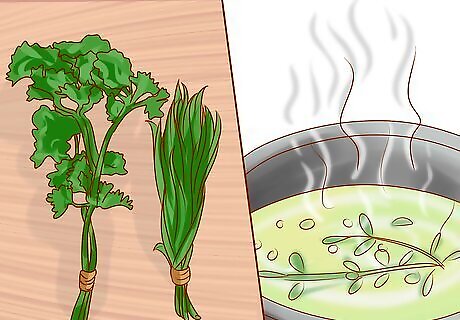
Use the right herbs for steam treatments. You can use dried herbs or the essential oils when you use the steam method for your decongestion. Essential oils tend to be a bit more effective because they are the concentrated forms of the herbs. You can also try a mixture of a couple different herbs or oils, such as eucalyptus and peppermint. These essential oils have either antibacterial, antifungal, or antiseptic properties. This means they can kill bacteria and other microorganisms that can infect the sinuses as well as help break up congestion. Be aware that allergic reactions are always possible with herbs. The first time you try an herb, do so for only three to five minutes for steam treatments and and then wait for 30 minutes to determine if you are experiencing any adverse reactions. If you do, choose another herb.
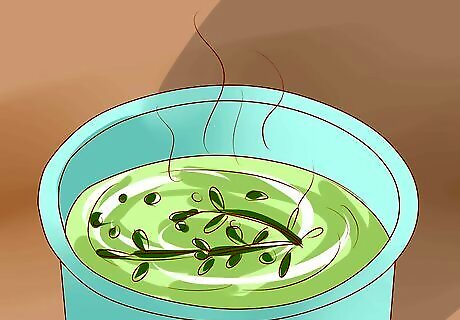
Prepare herbal steam treatments. Fill a one quart pot with water. Place the pan on the stove and let it boil. Remove from heat, then add either one to two drop of the essential oils or 1/2 a teaspoon of dried herbs for one quart of water. Sit the pot aside and cover. Let the oil or herb steep in the hot water for five minutes. If you don't have a quart pot, a kettle or other pot that can hold at least a quart of water will work fine. Never place your head over boiling water. This can cause burns or serious injury. Cayenne pepper is the exception to the recipe for teas and steam decongesting. Use ⅛ to ¼ a teaspoon. This herb is very strong and is too overpowering in larger doses.

Use the herbal steam treatment. Open the lid of the pot. Place your hand over the pot to test the temperature. It should be hot but not painful. If it is a good temperature, cover your head with a large, clean cotton towel, close your eyes, and place your head over the steaming pot that is away from the stove. Keep your face at least 12 inches away from the water. You want the heat to enter your nose and throat, but you certainly don’t want to damage or burn yourself with heat. Breathe in through your nose and out through your mouth for five counts and then in and out through your mouth for two counts. Repeat for 10 minutes or as long as the water is still steaming. Try to blow your nose during and after the treatments. You can do this every two hours or as often as your schedule permits.
















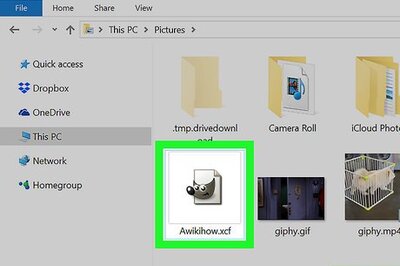

Comments
0 comment